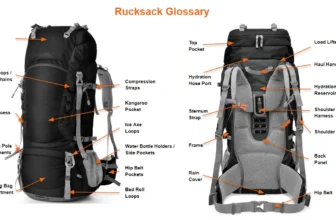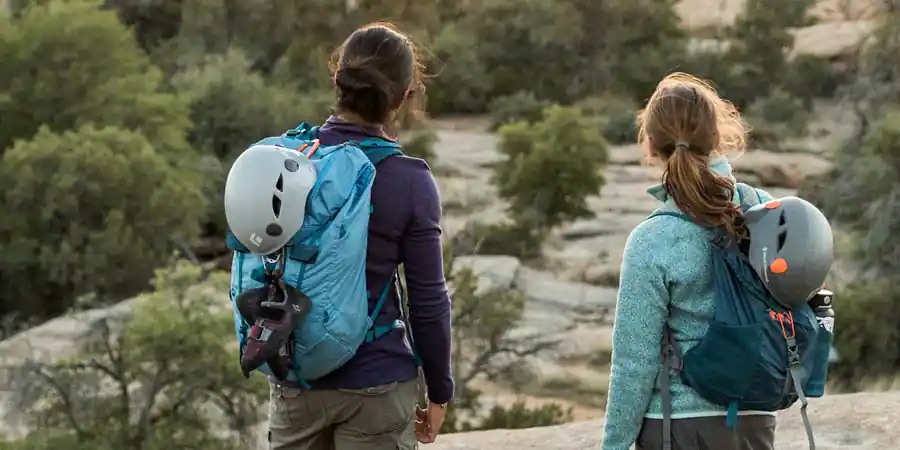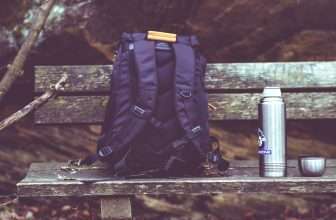
Contents
ToggleIntroduction
Choosing a rucksack that is right for you is a crucial decision for many people regardless of the purpose it is intended for. Typically a rucksack may be required to be used across multiple activities and so this makes choosing a rucksack a bit more tricky so we produced this buying guide to choosing a rucksack.
A well-designed rucksack not only carries your essentials but also enhances comfort, organization, and functionality throughout the day. Whether you’re planning a multi-day hike, a weekend camping trip, or simply need a reliable bag for work or school, the right rucksack can make all the difference.
But with so many styles, features (see our rucksack glossary), and sizes available, selecting the one that suits all your needs can be overwhelming. Key considerations include its capacity, comfort, durability, and special features that align with your intended use.
In this buying guide, we’ll explore the key factors to consider when choosing a rucksack, from assessing its storage capacity to ensuring the right fit. We’ll delve into the importance of material durability, weather resistance, and packability, as well as highlight useful features such as hydration compatibility, adjustable harnesses, and security enhancements. Whether you’re an experienced hiker or someone looking for a dependable everyday rucksack, this article will help guide you through the selection process, ensuring you find a rucksack that meets your requirements and suits your lifestyle.
Versatility and Use Cases
What will the rucksack be used for? Is it just for hikes or can you combine its use for other activities to save on having a cupboard full of different bags for different purposes?
Here’s a list of activities where a rucksack can come in handy:
Hiking and Trekking – Carrying essentials like water, food, maps, first aid, and extra clothing.
Camping –Storing camping gear, sleeping bags, cooking equipment, and personal items.
Traveling –Packing clothes, toiletries, travel documents, and gadgets for easy access.
Backpacking –Long-term travel with everything you need on your back, including clothes, gear, and supplies.
School or College – Carrying books, notebooks, laptops, stationery, and lunch.
Work Commute – Transporting a laptop, documents, lunch, and personal items to and from work.
Outdoor Sports – Holding sports equipment, hydration packs, snacks, and protective gear for activities like cycling, climbing, or skiing.
Day Trips – Carrying snacks, water, camera, maps, and other essentials for a day of exploration.
Gym or Fitness – Storing workout clothes, shoes, water bottle, and fitness equipment.
Photography – Carrying a camera, lenses, tripod, and other photography gear safely.
Grocery Shopping – Transporting groceries or other shopping items hands-free.
Picnics – Packing food, drinks, a blanket, and games for a day out in the park.
Capacity and Organization
- Storage Capacity: Evaluate the daypack’s capacity, how much space do you really need, and whether it’s sufficient for the essentials for your chosen activities.
- Compartments and Pockets: Assess the number and variety of compartments. Check for specific features like a laptop sleeve, hydration bladder compartment, or organization pockets for small items (keys, wallet, phone). Side pockets for water bottles are very useful across many activities so one to watch out for.
- Accessibility: Consider how easy it is to access different compartments. Evaluate the placement of zippers, quick-access pockets, and how easily you can retrieve items on the go.
Comfort and Fit
- Shoulder Straps: Review the comfort of the shoulder straps, including padding, width, and adjustability. Try to imagine how well they distribute weight, especially when the pack is fully loaded. If you can try it on in a shop then great if not load it up when it arrives and try it out at home first. Many online retail stores will accept returns as long as they are in the original condition and within their returns period.
- Back Panel: Assess the back panel’s breathability, padding, and contouring. Consider how comfortable the pack might be during long hikes, commutes, or day trips.
- Hip Belt and Chest Strap: If the daypack includes a hip belt or chest strap, evaluate their adjustability, comfort, and effectiveness in stabilizing the load.
Durability and Weather Resistance
- Material Resilience: What is the rucksack material and how long will it last? It is hard to judge sometimes but a ripstop fabric is always a good choice and a thicker denier should be more resistant to wear and tear. Watch out for flimsy buckles and staps and check how they are connected to the main bag. A strong strap is only as good as its connection to the rucksack in the first place.
- Weather Resistance: How much water resistance do you need? A plastic liner can be used inside a rucksack to keep your stuff dry in a lot of cases but if you require a more robust waterproofing get a rucksack saying it is waterproof, check if the zippers and seams are waterproof or if the bag includes a rain cover. Lastly, check other people’s reviews to see if anyone has had problems with water ingress.
Portability and Packability
- Packed Size and Weight: Assess how compact the rucksack is when using it and also when not in use. Will it fit in the car with all your camping gear, will it wipe everyone out as you stroll down the train carriage, will it fit inside your gym locker, how easily can it be packed into a suitcase or larger backpack for travel?
- Weight: Will the rucksack be too heavy once full of your precious belongings? A good starting point is the weight of the rucksack itself. What does it weigh? How big do you really need the rucksack and do you really need any frames and extras that add the additional weight? It needs to be light enough for you to carry but still robust enough for more demanding use.
Special Features
- Technology Integration: Do you want the rucksack to include features like USB ports for charging devices, RFID-blocking pockets, or integrated lights? Some do so keep an eye out for this feature when choosing a rucksack.
- Security Features: Evaluate any anti-theft features, such as lockable zippers, hidden pockets, or cut-resistant materials.
- Eco-Friendly Considerations: Many rucksacks are made from recycled materials or ethically sourced materials. If this is something on your wishlist then be prepared to pay a bit extra but all for a good cause.
Practicality and User Experience
- Everyday Use: Reflect on how the daypack may perform in day-to-day scenarios. Will it be easy to live with, or will you encounter annoyances (e.g., hard-to-reach pockets, uncomfortable straps)?
- Versatility Across Uses: Consider how well the pack may transition between different uses—whether it’s equally effective for hiking, commuting, and gym use, or if it excels in one area but not others. What will you be using the rucksack for most? There will always be a compromise but you don’t want it to be on your main activity.
Value for Money
- Price vs. Features: Compare the rucksack’s price with its features and performance. Consider whether it offers good value relative to other packs in the same category.
- Warranty and Support: Does it have a manufacturer’s warranty and any customer service experiences that could influence the long-term longevity?
Overall Impressions
- Design and Aesthetics: Do you like the overall appearance of the rucksack, including colour options, style, and how it fits into different environments for example the great outdoors, city commute or gym? There is nothing wrong with choosing a rucksack based on aesthetics alone but it si important to consider all the features that you may want from your rucksack or maybe you will not get the use out of it as much as you had hoped.
- Build Quality: Inspect the materials used (fabric, zippers, buckles) for durability and quality. Consider if the pack feels sturdy and well-constructed
Conclusion
Choosing a rucksack is a balance between practicality, comfort, and the specific needs of your activities. By carefully considering factors such as storage capacity, durability, comfort, and weather resistance, you can find a rucksack that not only fits your body but also suits your lifestyle.
Keep in mind that versatility is key, especially if you plan to use the rucksack across multiple scenarios, from hiking to daily commutes or travel.
Additionally, checking for features such as organization compartments, technology integration, and eco-friendly materials can add value to your purchase.
Ultimately, the right rucksack should offer a balance between functionality and comfort, making it easy to carry your belongings without causing strain or discomfort. As with any investment, ensure that your chosen rucksack offers good value for money and consider the long-term benefits of a quality build and added warranty. By selecting a rucksack that complements your activities and preferences, you’ll be well-equipped for whatever adventures or daily routines come your way.
Ali
As an editor for our camping website, Ali brings a wealth of expertise and a deep passion for all things camping, in the hope that every article is inspiring others to want to explore the great outdoors. With nearly 40 years of camping experience from caravans to tents and now a campervan, Ali has embraced every form of outdoor living and has knowledge that is both practical and extensive.





